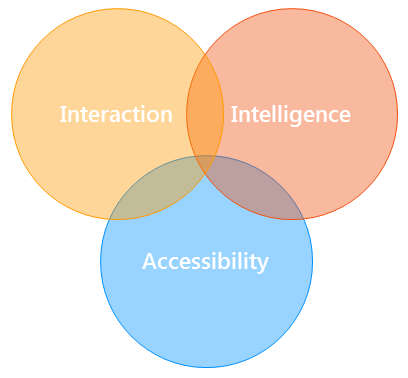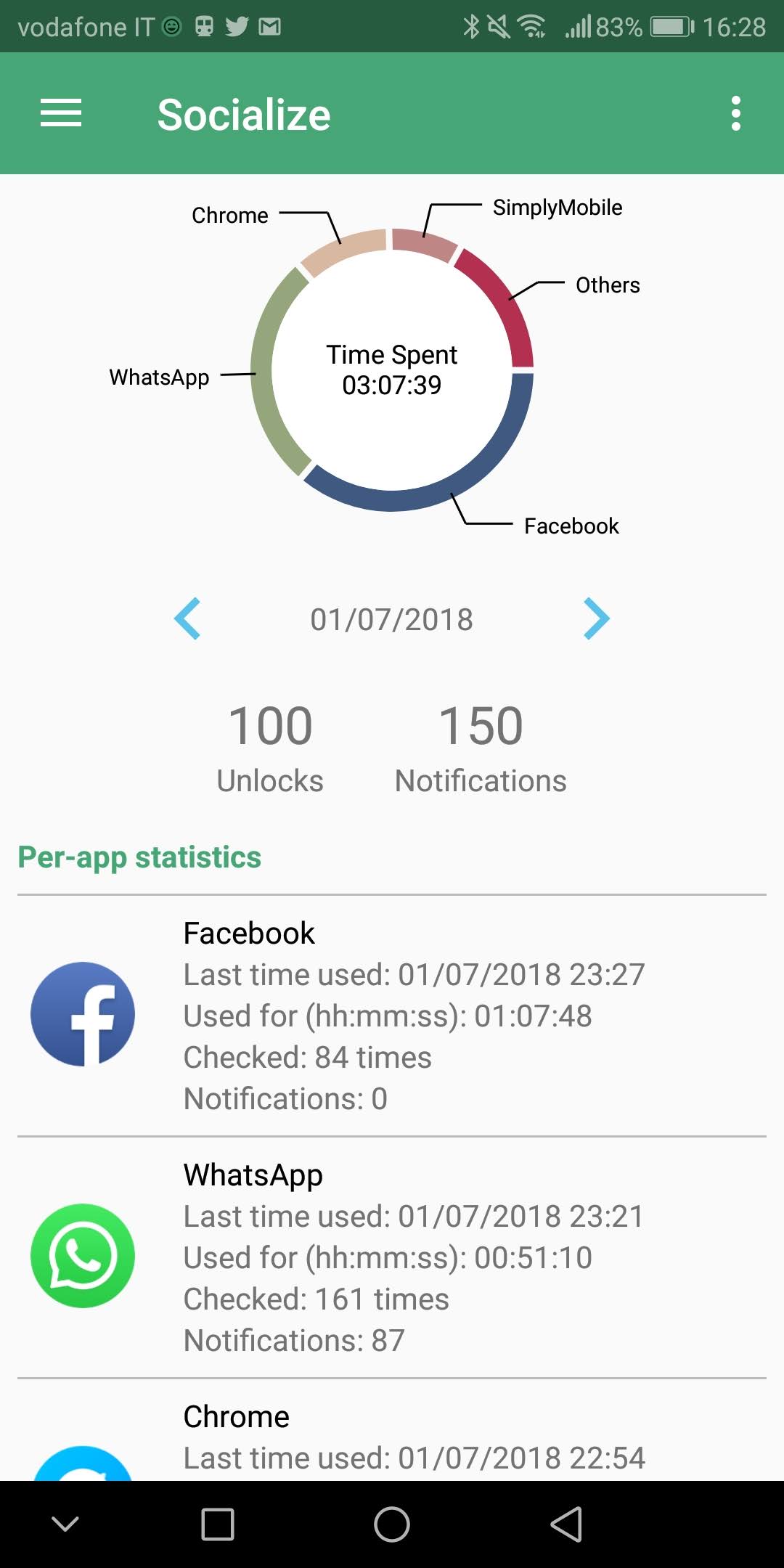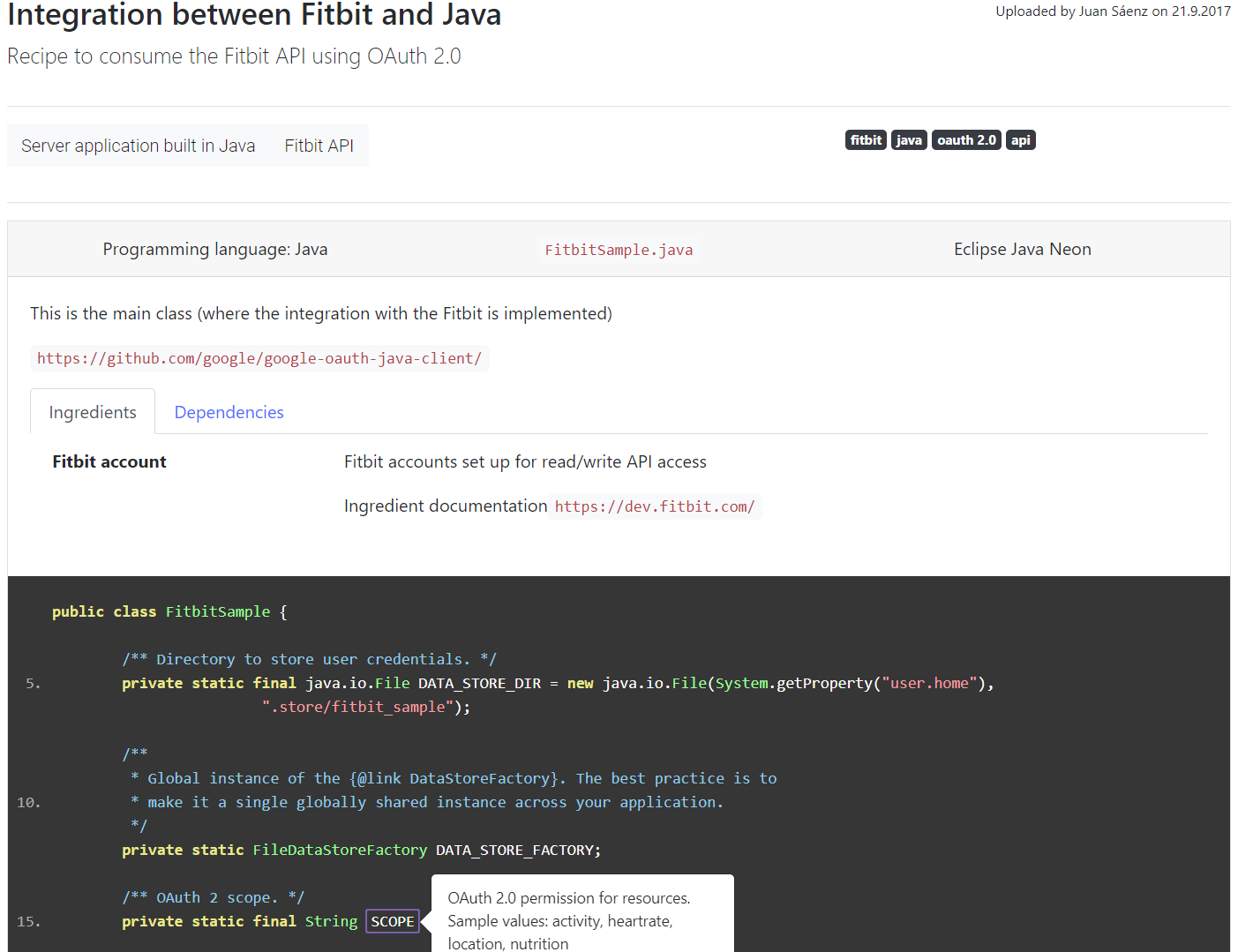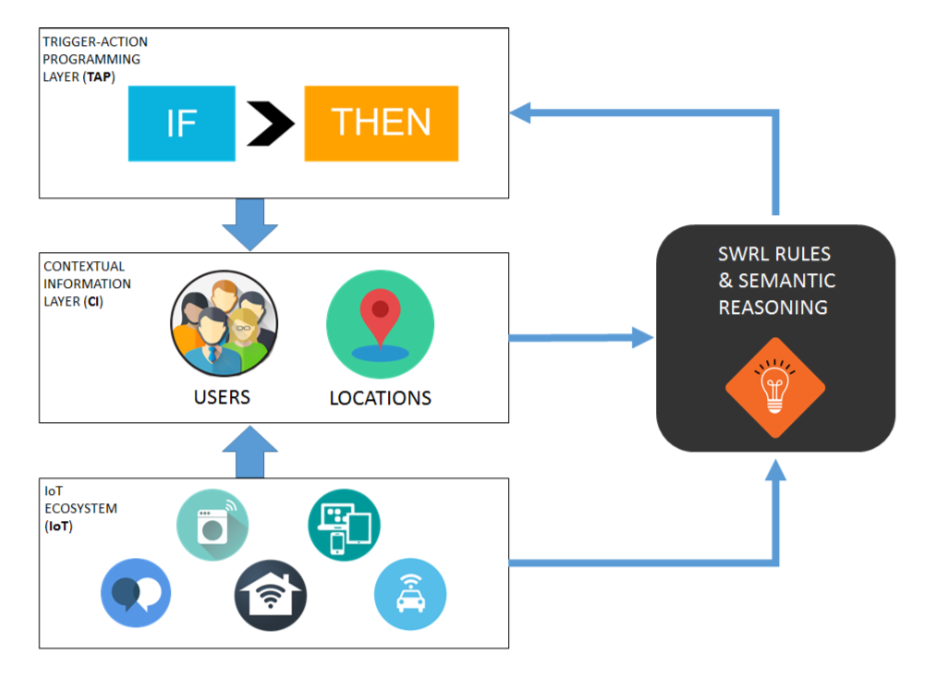Research activities of the e-Lite group focus on designing, building and evaluating interactive and intelligent systems, and testing them in realistic settings. Novel user interaction modalities, empowered by ubiquitous devices, enable the discovery of innovative methods to approach new and existing application domains. We adopt an end-to-end research approach, where we aim at exploring the whole spectrum, from devices to users, from intelligence to data representation, to develop a systemic approach.
Currently, the application area in which we are mostly active is Ambient Intelligence.
 Ambient Intelligence (AmI) aims at building a digital environment where people are surrounded by intelligent and intuitive interfaces embedded in all kinds of objects. The ultimate goal of such an environment is to support people in their daily lives in a proactive, yet sensible and unobtrusive, way.
Ambient Intelligence (AmI) aims at building a digital environment where people are surrounded by intelligent and intuitive interfaces embedded in all kinds of objects. The ultimate goal of such an environment is to support people in their daily lives in a proactive, yet sensible and unobtrusive, way.
In this wide area, we mainly focus on innovative interaction modalities for people and on the intelligent aspects (e.g., Semantic Web) of the environment, typically exploiting off-the-shelf devices and systems from the Internet of Things and Smart Home domains. We are also interested in understanding how to effectively support developers to build such systems.
Moreover, we deserve particular attention to the Ambient Assisted Living field, in which Accessibility and Assistive Technologies meets AmI. In this domain, we experiment with novel interaction modalities and systems for people with disabilities.


 Smartphones have become an integral part of our daily lives.Through smartphones, users can nowadays perform many different tasks such as browsing the web, reading emails, and using social networks. As smartphone use increases dramatically, however, so do studies about the negative impact of overusing technology. Smartphones, in particular, have been found to be a source of distraction, and their excessive use can be a problem for mental health and social interaction.
Smartphones have become an integral part of our daily lives.Through smartphones, users can nowadays perform many different tasks such as browsing the web, reading emails, and using social networks. As smartphone use increases dramatically, however, so do studies about the negative impact of overusing technology. Smartphones, in particular, have been found to be a source of distraction, and their excessive use can be a problem for mental health and social interaction. Nowadays, end users who want to personalize their Internet of Things (IoT) ecosystem can take advantage of visual programming platforms such as
Nowadays, end users who want to personalize their Internet of Things (IoT) ecosystem can take advantage of visual programming platforms such as  The co-existence of various kinds of devices, protocols, architectures, and programming languages make Internet of Things (IoT) systems complex to develop, even for experienced programmers. When novice programmers are learning to implement these systems, they are required to deal with areas in which they do not have deep knowledge. Furthermore, besides becoming proficient in these areas separately, they should integrate them and build a system whose components are heterogeneous from both software and hardware perspectives.
The co-existence of various kinds of devices, protocols, architectures, and programming languages make Internet of Things (IoT) systems complex to develop, even for experienced programmers. When novice programmers are learning to implement these systems, they are required to deal with areas in which they do not have deep knowledge. Furthermore, besides becoming proficient in these areas separately, they should integrate them and build a system whose components are heterogeneous from both software and hardware perspectives. Programming environments for end-user development (EUD) in the Internet of Things (IoT) are becoming increasingly common. They allow users to define simple IoT applications, i.e., connections between different IoT devices and services, by mainly employing trigger-action rules. Unfortunately, the adopted representation models are highly technology-dependent, e.g., they often categorize devices and services by manufacturer or brand. Such an approach is not suitable to face the expected growth of the IoT, nor it allows to adapt to yet undiscovered IoT services.
Programming environments for end-user development (EUD) in the Internet of Things (IoT) are becoming increasingly common. They allow users to define simple IoT applications, i.e., connections between different IoT devices and services, by mainly employing trigger-action rules. Unfortunately, the adopted representation models are highly technology-dependent, e.g., they often categorize devices and services by manufacturer or brand. Such an approach is not suitable to face the expected growth of the IoT, nor it allows to adapt to yet undiscovered IoT services.